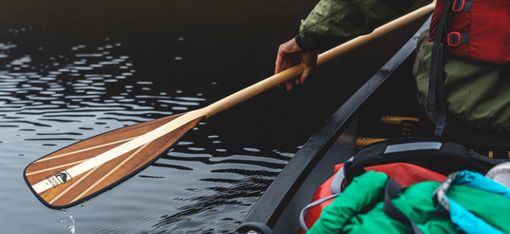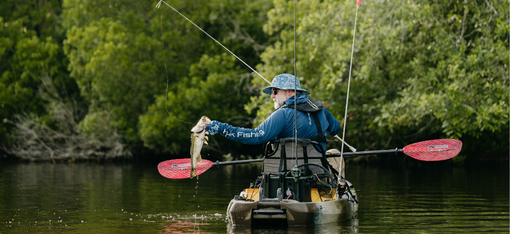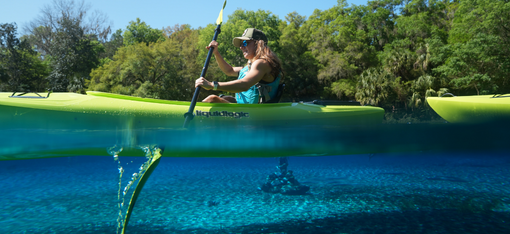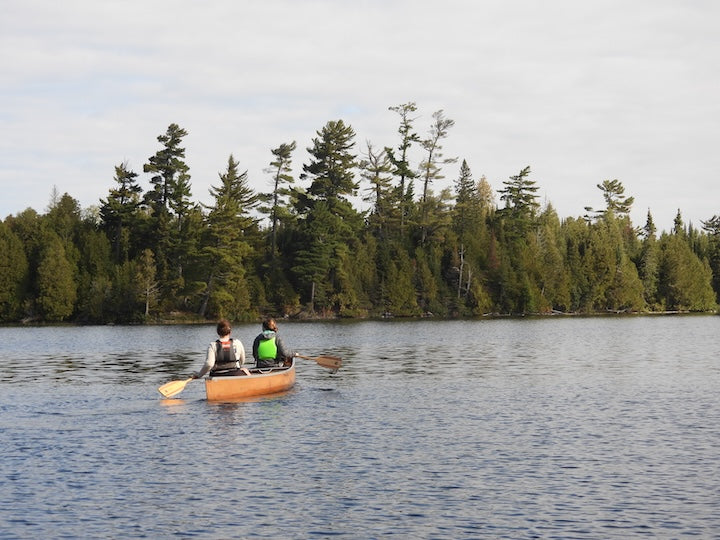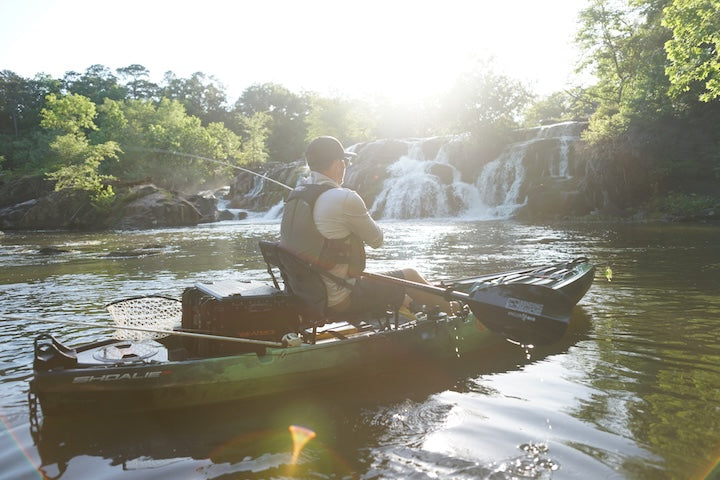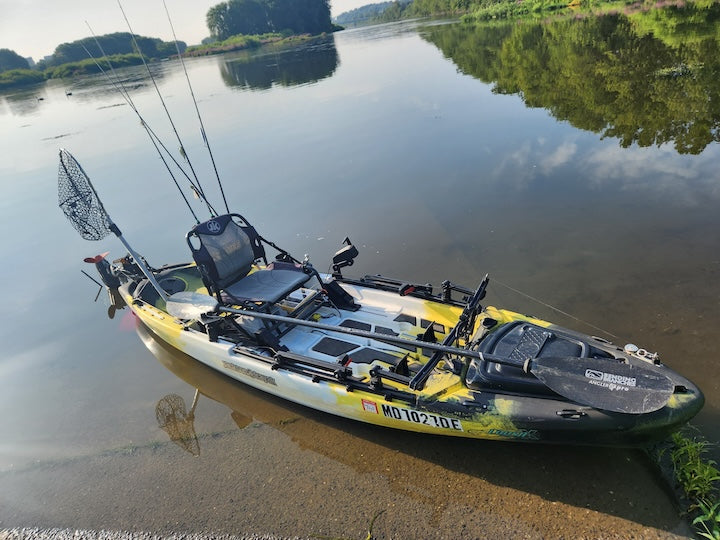Kayaking on Great Salt Lake, Utah

Great Salt Lake in Utah isn’t one of those destinations that’s on anyone’s list of best kayaking spots in America! But kayaker, Scott Baxter, has been paddling the lake for 30 years.
Here’s his story of his circumnavigation of Great Salt Lake, the first kayaker to do so.
Why Great Salt Lake?
“The Great Salt Lake is both the largest body of water between the Great Lakes and the Pacific Ocean and the largest salt lake in the western hemisphere.” (historytogo.utah.gov/great-salt-lake)
The lake averages 75 miles long by 35 miles wide, comprises over a million acres of water most years, and sits at an elevation of 4,200 feet—its deepest point being just 33 feet.
The salt density (about 27% in the northern section and 16% in the southern section) is due to several rivers running into the lake with no outflow. The surrounding desert conditions cause evaporation, leaving the salt and other minerals behind.
Scott shared, “Fewer than 1% of Utah residents have ever been to the lake. There are really just three access points for the public: a state park on an island [Antelope Island] that has a causeway to it, a marina on the south end, and a land arch on the northeast side.
“It’s just not one of those lakes with trees and grass where you’d sit and have a picnic and look at the water. It doesn’t fit most peoples’ definition of a nice lake to go see.”
But Scott’s love for kayaking and the Great Salt Lake ecosystem have compelled him to paddle the lake and surrounding wetlands for three decades. He’s been waiting for the right time for a circumnavigation trip. That time was early fall of 2021.
Scott’s goal with his kayak trip was to explore the various environmental impacts affecting Great Salt Lake to bring more awareness to the public.
The lake is affected by three potential threats—global warming and a 30-year drought are part of the declining water levels. But the biggest impact has been the diversion of the water from the streams and rivers flowing into the lake.
What Makes Great Salt Lake a Unique Kayaking Destination?
Great Salt Lake “is considered of hemispheric importance to birds. 10 million migratory birds pass through the lake each year. It’s a major staging ground for them, where they fill up with their food supply before they move on,” said Scott.The brine flies and brine shrimp that live in the lake are a major food source for them.

Scott Baxter and trip partner, Matt Kahabka, kayaked 180 miles around Great Salt Lake
One of his main goals for the kayak trip was to document the conditions of structures called microbialites that form the foundation of the food chain there. Microbialites are “a calcium carbonate structure with cyanobacteria, algae and other organisms living in and on them and actively creating them. It’s a kind of living rock.”
Great Salt Lake has the largest grouping of microbialites in the world. Unfortunately, due to decreasing water levels, many of them are exposed to the air now and are dying, jeopardizing that important food chain.

Matt looking over a grouping of microbialites exposed by low water
Scott’s been involved with several environmental groups around the lake for many years. That, and his love for kayaking and photography, bring him to its waters regularly and are what spurred his desire for this trip.
What is it like to kayak on Great Salt Lake? “The Lake is remote and very inhospitable. It’s questionable whether rescue boats could even get out to help anyone,” said Scott. Because of its size and location, the lake is susceptible to strong winds. The waves can be high and tend to be close together.
They saw no other people the first five days of their trip. And because there are few cities along the shore, especially on the north end, the night skies are dark and beautiful.
They carried a six-day supply of water with them, and stashed a couple gallons on-shore in a couple locations as well, just to be prepared. They wanted at least two gallons of fresh water with them at any given time. As it turned out, they didn’t need those extra gallons, but were glad to have the option.

The Circumnavigation Trip Details
Scott shared that Utah’s State Forestry Department is responsible for the lake and surrounding lands. They don’t usually allow overnight recreation on the lake other than in the parks, partly because it’s so remote.
Scott had to get a special permit for his 6-10 day trip. Since no one had ever asked to circumnavigate the lake by kayak before, it was a bit of a process! But Scott was impressed with the Department’s cooperation and was able to get the needed insurance and permit.
He said, “They knew my credentials as a kayaker, they knew my background on the lake. And part of the commitment was that my images would be available to the state agencies and universities and various groups around the lake to be able to use them.”
Scott had considered a solo trip, but was very glad when Matt was able to take the time to accompany him.
“I didn’t think I’d be doing this trip at 60 years old! It was brutal. But I had a guy with me, Matt Kahabka (Scott’s daughter’s boyfriend), who’s 28, and it was as hard on him as it was on me—so I felt pretty good about that! But I don’t think I could’ve done this trip mentally without him along.”
The two men kayaked 180 miles altogether, averaging 30 miles a day. In the first two days they faced stiff winds and 2-3 foot waves. They had allowed 10 days to complete it if needed, but were able to finish the distance in six days.
For us northerners, when we see all the white covering the shoreline of the lake, we think of snow. But here, it’s salt.

Campsite on the salty shoreline of Great Salt Lake
All of their gear became covered in it during the several days of their trip. Velcro tabs and rudders stopped working as they became encrusted. They had to use rope to scrape the salt off the hulls of their kayaks, it was creating so much drag as they paddled.

Encrusted salt on one of the kayaks
The Kayaks and Paddles Used
Scott designs and builds his own kayaks. He frequently paddles high-elevation lakes in the American West, which often means a combination of wind and steep, tight waves. So he designs his boats for those kinds of conditions.
The wood boats of his that they used on this trip were 17.8-foot and 16.8-foot sea kayaks.
Scott has been using Bending Branches canoe paddles since the 80s. He bought his first Navigator wood kayak paddle many years ago when it was first introduced. “It’s my favorite paddle by far,” he said.
“The shaft feels good in my hands. It’s stiff enough that you don’t use a lot of energy through excess bend. The blades are a good size for my shoulders. I can paddle all day with that size of blade. As I get older that’s really significant. All my kids prefer Bending Branches paddles, too. They just don’t beat us up as much! And they’re by far the prettiest paddle out there, so it matches our wood kayaks.”
Scott found the wood paddles handled the salt just fine. He knows other paddles would’ve been damaged by the salt crystals that cover everything, especially on the north end of the lake. But with the Rockgard protection, he doesn’t worry. “It’s just a good, durable paddle.”

You can learn much more about Scott Baxter’s Great Salt Lake circumnavigation kayak trip by visiting his Facebook page. He also did an interview with RadioWest that you can listen to here.
All photos courtesy of Scott Baxter.
What paddle questions can we help you with? Contact our friendly Customer Service team today: 715-755-3405 • [email protected]
More for you...




